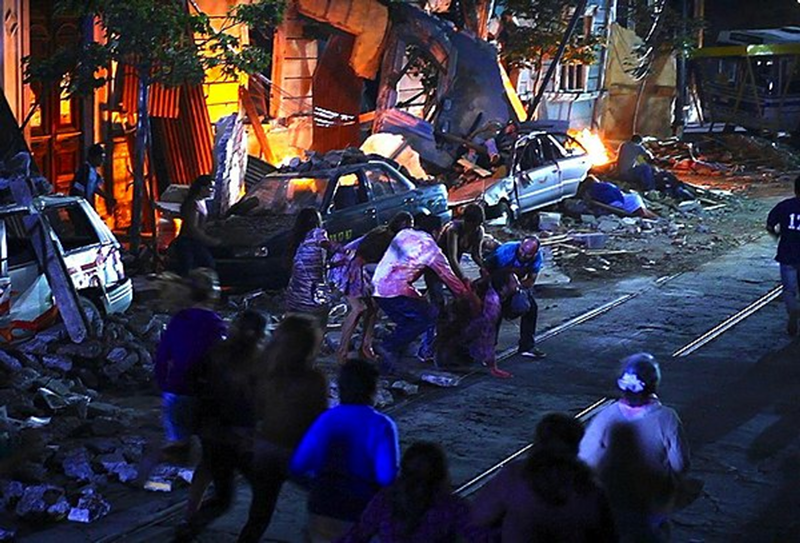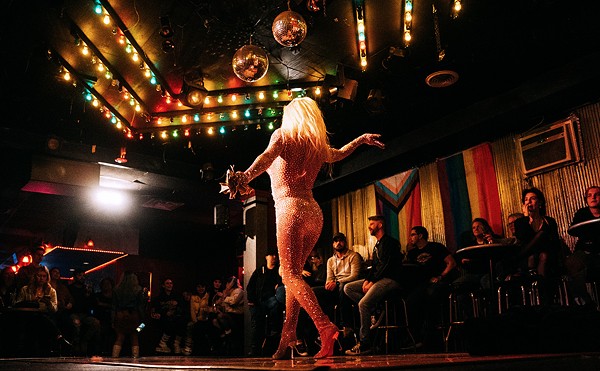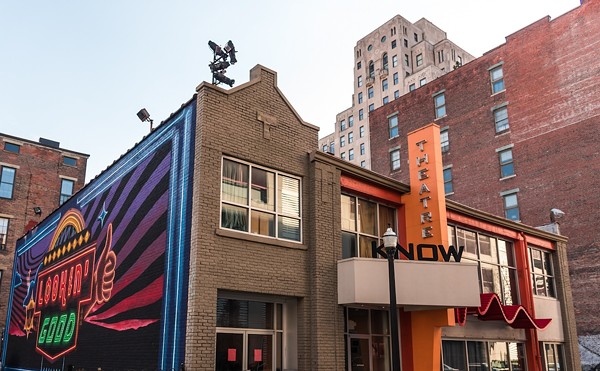You’ve got to say this for Eli Roth: Like his filmmaking brother-in-arms Quentin Tarantino, he’s got spools of film instead of veins with blood keeping his heart a-beating, and he’s a genre geek deep in the marrow of his bones. I would imagine that the guy dreams in grainy Technicolor.
Aftershock, which screened as part of Midnight Madness at last year’s Toronto International Film Festival, was a healthy dose of true blood to the faithful, except it also packed a powerful punch, an extra secret burst of tasty goodness because it mixed disaster tropes into its bloody heart. What’s not to love?
Directed by Chilean Nicolás López, the movie kicks off with an American gringo (Roth) and a pair of hapless buddies (Ariel Levy and Nicolás Martinez) enjoying a spring break-styled vacation (although these fellas are older working stiffs/slacker types) in Chile. Fun in the sun, outdoor adventures and nights in the clubs form the basis of the story. Balance, in terms of character, comes from three women (Andrea Osvárt, Lorenza Izzo and Natasha Yarovenko) who serve as counterpoints to the guys. During the set-up, the aim is to introduce the types and make us feel some sort of relational bond with them. Roth — as the familiar name in the bunch — has the deck stacked a bit more in his favor with a sentimental family angle (a young child back home) and his over-eagerness, which is meant to humanize him.
When the initial disaster strikes, an off-the-scale earthquake quickly followed by an even more devastating tsunami, it is as if nature takes on the role of Jigsaw from the Saw series or the cruel forces manipulating things in Roth’s Hostel films. We are supposed to feel the senselessness of the mayhem, but we can’t quite see past the violence and gore inflicted upon the victims. Mother Nature is a bloody slasher at heart with a mean streak that just won’t quit. There are sacrifices to be made to save those with the best chance of overall survival, but the indiscriminate nature of old school disaster epics is absent.
Unfortunately, the follow-up is even worse. Mother Nature gives way to the raw brutality of human nature. Part two of the scenario involves the darkness of the human heart on full display. The few bands of survivors, seeking to reach security above ground, must contend with their own baser instincts. Somehow, while this is nothing new for the horror audience stalwarts, the presentation here feels more extreme. Nature (and, by extension, God) has not just turned a blind eye to human suffering, it has actively become a force for evil, and instead of joining together for mutual survival, people race impulsively down the dark path. Are the survivors of this experience really the fittest specimens, from a communal perspective?
It is worth asking, despite the fact that Aftershock might not want audiences to dwell for too long on this existential question. The movie is high-octane, a visceral thrill-ride that barely stops to catch its own breath along the way. It is about the state of shock itself, and how we might experience it in this situation. And it should be noted that Aftershock refuses to cop to the latest trends. There are no vampires, werewolves or zombies roaming the landscape, just humans who happen to have a hole where their hearts might have been.
There is something to be said for the wave of Spanish and Central and South American directors (Juan Carlos Fresnadillo, Andrés Muschietti, Rodrigo Cortés and Juan Antonio Bayona to name a few) who have emerged in recent years, arriving on the scene with the chops to scare and thrill us without pause or prose. They don’t want or need us to linger in these moments. In addition, there’s little to no concern in them for the genre as a value placeholder. Who cares, they seem to say, as they capture each action-packed moment, whether this is high or low culture — these are stories, so let audiences decide for themselves what they will like, love, hate or remain indifferent to.
Now that’s an attitude that has attracted the attention of patrons like Roth, Tarantino and Guillermo del Toro, filmmakers with cache and the willingness to put some of that clout behind what, in the end, is a bit of a gamble. But a bet like Aftershock is safer than the kind a studio makes on a would-be summer blockbuster. This isn’t a high risk that requires an even greater return for positive gain. The shock here is just bloody good fun. (Opens Friday at Pierce Point 10 in Amelia) (R)
Grade: B
CONTACT TT STERN-ENZI : [email protected]






